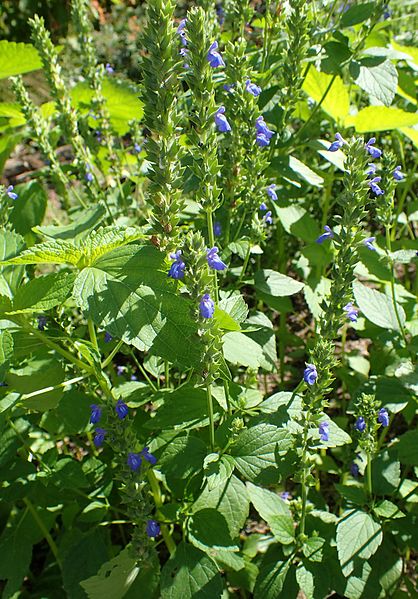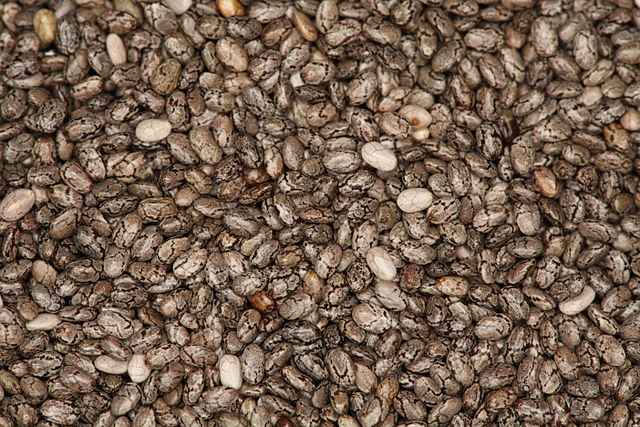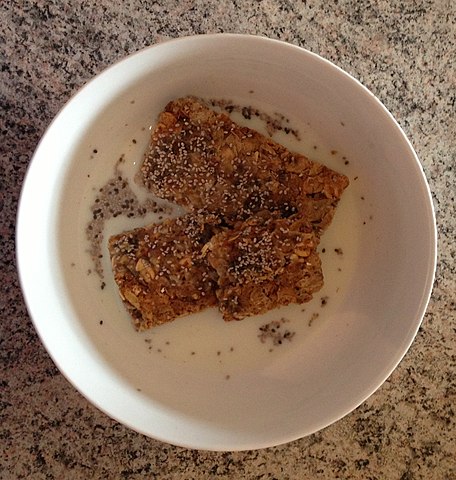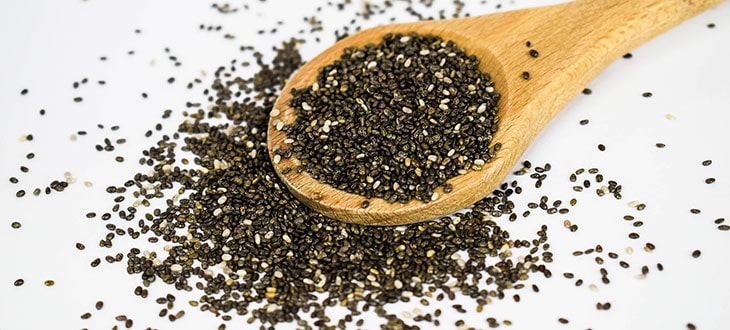Where do chia seeds come from?
Do you want to know where the chia seeds come from? Find out the answer to this question and other useful info about chia seeds in this article.
They are considered a superfood because of their rich content of minerals and antioxidants, and are comprised in numerous diets by the people who want to have a healthy lifestyle.
Although their popularity has only increased in recent years, chia seeds have been utilized for centuries as a food source and in traditional medicine.
But where do chia seeds come from?
Chia seeds are the edible seeds produced by the chia plant, botanically known as Salvia hispanica. This plant is indigenous to central and southern Mexico and Guatemala and belongs to the family of Lamiaceae (also known as the mint family).
Contents
Chia Plant (Salvia Hispanica)
Salvia hispanica is a pseudocereal, commercially cultivated for its edible seeds. Pseudocereals are plants that are not grasses but are utilized in much the same way as true cereals, which are botanically grasses.
Chia is a perennial plant, but commonly grown as an annual in most climates. It grows upright and rarely exceeds 3.3 ft (1m) in height. Its stems are quadrangular, simple or sparingly branched, and are covered with short, white hairs.

The leaves of Salvia hispanica are bright-to-mid green, petiolate, heavily veined, ovate to ovate-elliptic in shape, and have toothed margins.
Salvia hispanica blooms from late spring till fall. The flowers are tiny, blue, and grow in dense clusters at the top of the stems (racemes).
The seeds produced by the chia plant are small, oval in shape, and mottle-colored, with shades of brown, black, white, and gray.

The chia seeds are ready to harvest in the fall after the flowers dry and lose their petals.
Salvia hispanica is a plant well-adapted to the desert conditions, so it can grow in sandy loam soils and requires little irrigation.
Chia Seeds History
Chia seeds are far from being new aliments. Evidence shows that the chia plants were cultivated for their edible seeds as early as 3500 BC and became a commercial crop in Mexico between 1500 and 900 BC.
They were cultivated in the Central Valley of Mexico by several ancient civilizations, including the Mayans and Aztecs.
Chia seeds had great significance for the Aztecs. They have used these seeds in various ways, like pressing them to obtain oil, grounding them into flour, feeding poultry, in the preparation of drinks, etc.
Even these old civilizations realized the properties of these seeds and their beneficial effects on the body. Besides the fact that they were often used as natural remedies for various conditions, these ancient nations also acknowledged that consuming chia seeds gave them extra energy and vitality.
Are Chia Seeds Good For You?
Chia seeds are generally associated with healthy foods and their consumption is promoted to carry various positive effects on the human body.
Although they have been a part of the human diet for thousands of years, they were almost forgotten until recently. In recent years, they have started to become popular again and many food companies began to add these tiny seeds to the composition of products like bread, yogurts, cookies, cereals, and in various drinks.
Their nutritional content is becoming more acknowledged and these seeds are becoming easier to find on supermarkets’ shelves.
According to Healthline, chia seeds contain a good amount of proteins, omega-3 fatty acids, and fibers, as well as several essential minerals and antioxidants. They are, however, not such a great source of vitamins.
The dominant minerals found in chia seeds are phosphorus, magnesium, copper, calcium, iron, and selenium.
Other compounds found in these seeds with various known benefits for the human body include quercetin, caffeic acid, chlorogenic acid, and kaempferol.
According to the same source cited above, the consumption of chia seeds in normal amounts does not normally provoke any adverse effects. However, they may produce blood-thinning when consumed in large quantities due to the high content of omega-3 fats. They also contain a plant compound that can decrease mineral absorption.
If you are someone with many known allergies, you may still want to consume chia seeds cautiously. Although infrequently, various sources state that allergic reactions can occur.
How To Consume Chia Seeds
Chia seeds can be eaten as whole or grounded as a powder and utilized in various recipes. They are often added to smoothies or beverages, soaked in milk, combined with yogurt or oatmeal, added in cookies, in puddings, as salad dressing, etc.

In dry form, they are crunchy, but when soaked in liquid, they absorb it becoming very soft.
Generally, chia seeds don’t have a strong taste on their own. Therefore, they can complement many types of foods. Many describe their taste as a mild nutty flavor, somehow similar to poppy seeds.
Final Word
Chia seeds are appreciated mostly for their nutritional value and the potential benefits associated with their consumption.
Although they are not as popular as the seeds of other plants, such as those of sesame or poppy, chia seeds have been used for thousands of years as a food source, in natural medicine, and for many other purposes.

